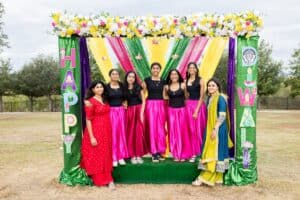Whether you are an avid birder or an ambitious amateur, Travisso’s landscape overlooking the Texas Hill Country is a bird lover’s haven. From sunrise to sunset Central Texas birds provide a free show of vibrant colors and delightful songs. And their array of unusual habits makes this backyard sport a rewarding experience. Birding is a combination of a bit of luck and having the right feeder to attract them. It’s also a lot of knowing what you are looking at.
Even if you are new to the Lone Star State we’re sure you already know that everything is bigger here. Same goes for the 600 species of birds that make Texas their home. It’s more than in any other state. That’s an impressive number and something to keep in mind when you travel through the state’s large land mass. To identify the birds that frequent your backyard we put together a list of some common species in the area. Remember to equip yourself with a good pair of binoculars. Let’s go!
Black-capped Vireo and the Golden-cheeked Warbler
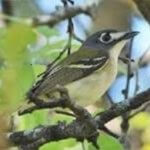
While it may not be possible to see these two birds from your backyard, you can view their breeding habitats at Balcones Canyonlands National Wildlife Refuge, a short 10 minute drive from Travisso. Over 32,000 acres protects the area’s wildlife including the nesting habitats of the black-capped vireo and the golden-cheeked warbler, two migratory birds. Relatively small in size, the vulnerable black-capped vireo can be seen from the refuge’s Shin Oak Observation Deck from approximately April through September.
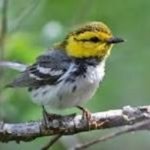
With its bright golden head and strong vocals the endangered golden-cheeked warbler’s Texas appearance from March to July is not to be missed. They are here just a short time to nest in the oak-juniper woodlands found only in Central Texas. While at Balcones don’t miss the opportunity to spot a few more of the 270 bird species that visit the refuge.
Black-chinned Hummingbird
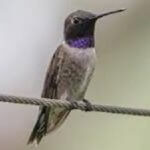
Hummingbirds are tiny, interesting creatures that we love to attract to our yards. They have long beaks, nonstop fluttering wings and unique flight patterns. And they’re frequently seen noshing at backyard nectar feeders and on flowers across Central Texas. As one of the most numerous breeders in Texas, the black-chinned hummingbird is both beautiful and adaptable. When not at your feeder you can find it by listening for its distinctive low-pitched humming wings. It can also be found perched on bare branches at the tops of dead or live trees.
Carolina Chickadee
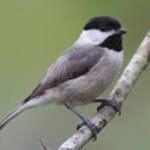
This small, gray, large-headed bird with white cheeks and a plump body is an indication of its frequent habit of visiting backyard bird feeders. They love to snack and can be seen in urban areas and suburban backyards primarily in east and Central Texas. As a year-round Texas resident, the Carolina Chickadee breeds from February to July. And although it closely resembles the black-capped chickadee, it has its own distinct identity and voice. Its unique song is made up of a long four-note whistle unlike those of other chickadees.
Lesser Goldfinch
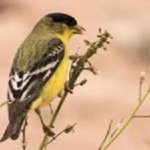
With its bright yellow belly and black head and wings the male lesser goldfinch is an easy bird to recognize. While the female lesser goldfinch’s appearance is slight different. Females sports an olive back, dull yellow underparts, black wings and two whitish wingbars. Both males and females have long, pointy wings and short, notched tails. Small in size and social by nature, the lesser goldfinch is a flock bird that feeds on seeds and grains in weedy fields and at feeders. They can be commonly seen in suburban areas where their songs can be easily heard. While in a flock its song is characterized by a wheezy and descending call with one to two notes at a time.
Northern Mockingbird
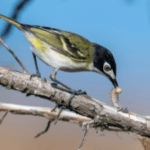
From Brownsville to El Paso to Dallas and Austin too, the Northern Mockingbird can be seen all over the state. As a species that lives here year-round it is the ideal symbol as the state bird of Texas. With a fighter’s instinct and the ability to protect their home it is the primary reason it represents the state today. But it’s their special talent singing a diverse playlist of over 200 songs from the sounds of other birds, inspects and amphibians is what they are most known for. These cherished songbirds never stop giving us a cheery morning song or two.
Red-tailed Hawk
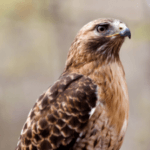
This large raptor is often seen looming on light posts overlooking grassy median strips looking for its next feast. Red-tailed hawks can easily be viewed in any open habitat. When other parts of the country gets cold, you’ll see this bird’s population in Central Texas swell. Though its name implies that the tail is red, in fact, it is more of a terra-cotta orange color. The dull-orange color makes this bird standout among its friends and foes.
To expand your knowledge of birds in Central Texas and throughout the state, download a free copy of Texas Birds: Introducing Texans to Common Birds. The Texas Parks and Wildlife Department publishes this informative and comprehensive guide.
Move-in Ready Homes Now Available at Travisso
Are you looking for your dream home? Check out Travisso’s current list of move-in ready available homes today. Specifically built for today’s busy lifestyles they offer open concept floor plans, media and game rooms, and large gourmet kitchens and gathering areas that make entertaining super easy. In addition, Travisso offers gorgeous views, a family-friendly neighborhood and endless recreational possibilities for the entire family. For additional information call 512-243-8583.

